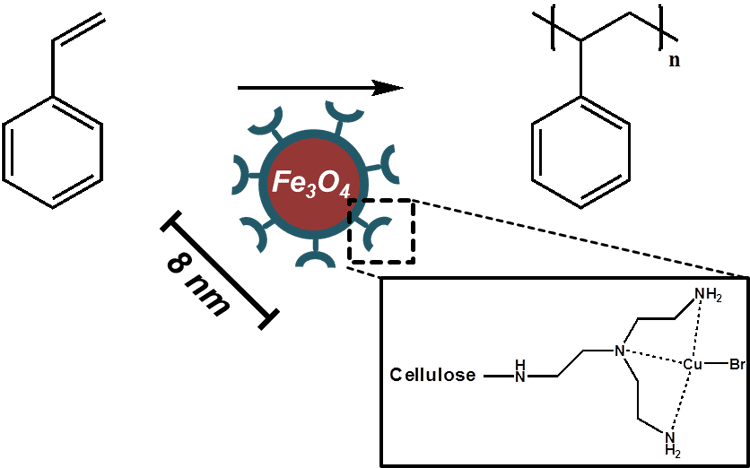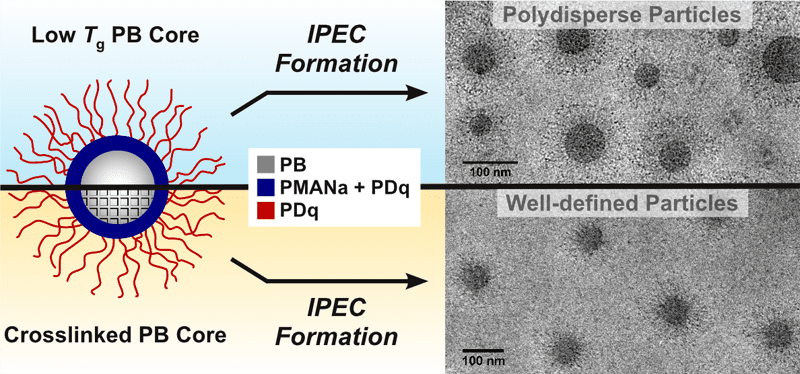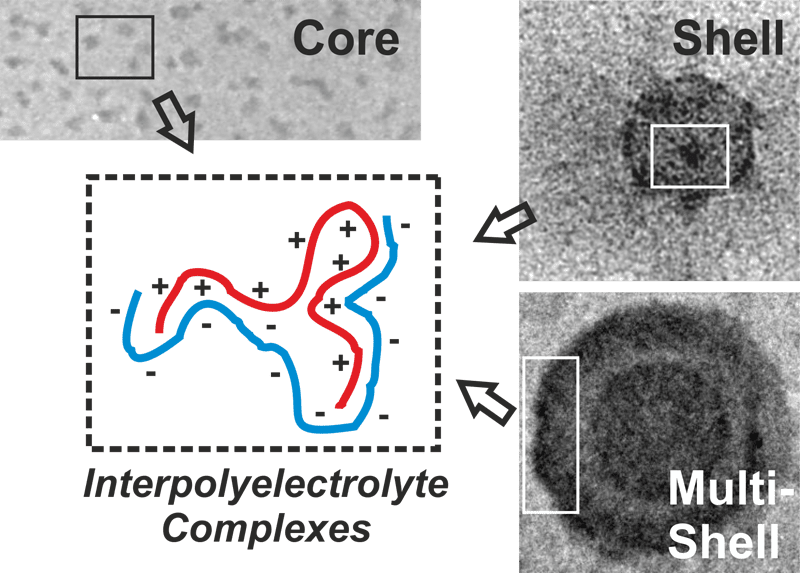Complex Colloids
We are interested in the synthesis and characterization of complex colloidal particles via different methods - but also try to use them in specific applications:
Catalytically active Hybrid Particles
In a collaboration with Prof. Thomas HeinzeExternal link (IOMC, FSU Jena) we have used aminocellulose for coating of superparamagnetic Fe3O4 nanoparticles (MNP@AC). The structural motifs present within the aminocellulose are almost identical to very common ligands used in controlled radical polymerizations (ATRP). We have thus used such core-shell hybrid particles as heterogeneous ligands in the ATRP of styrene. Very intriguingly, such particles can be well-dispersed in DMAc and, even more important, separated using a magnetic field after a successful polymerization.
see also: "Hybrid Fe3O4@Amino Cellulose Nanoparticles in Organic Media - Heterogeneous Ligands for Atom Transfer Radical Polymerization", J. Coll. Int. Sci. 2013, 390, 25-33
Image: Felix H. SchacherControl over Dynamics in Multicompartment Micelles
In a close collaboration with Prof. Axel H. E. MüllerExternal link (University of Mainz) we investigate the solution self-assembly of ampholytic triblock terpolymers as prepared via sequential living anionic polymerization in THF at low temperatures. In this case, polybutadiene-block-poly(methacrylic acid)-block-poly(N,N-dimethylaminoethyl methacrylate) PB-b-PMAA-b-PDMAEMA and their quaternized counterparts were shown to form multicompartment micelles in aqueous media - comprising a PB core, an intra-micellar interpolyelectrolyte complex (IPEC) shell formed by PMAA and PDMAEMA, and a PDMAEMA corona (as the PDMAEMA block is longer than the middle segment, PMAA). These structures were shown to respond to changes in salinity, pH, and temperature. If now PDMAEMA was quaternized to PDMAEMAq and the micelles were used in further IPEC formation with, e.g., poly(sodium styrene sulfonate) (PSSNa), we found significant changes in the size of the PB core afterwards - hinting towards fusion-fission processes occurring. This was a direct proof that such micelles are dynamic - if the PB core was crosslinked prior to the addition of PSSNa, this was not the case - the crosslinked core can be regarded as "frozen".
see also "Stimuli-Responsive Micellar Interpolyelectrolyte Complexes - Control of Micelle Dynamics via Core Crosslinking", Soft Matter 2012, 8, 10167-10177
Image: Felix H. SchacherMicellar Interpolyelectrolyte Complex Formation
Polymer chains bearing charges are also named polyelectrolytes. One has to differentiate between weak (partially dissociated, better: dissociation depending on the pH of the surrounding environment) and strong polyelectrolytes (fully dissociated), but also between polycations and polyanions. If a polycation and a polyanion are combined, an interpolyelectrolyte complex (IPEC) between both polymer chains is formed. The formation is driven by electrostatic interactions and the entropy gain through release of the counter ions at the same time. Stoichiometric IPECs are hydrophobic, although they still can incorporate water.
If now micelles with a polyelectrolyte corona are mixed with an oppositely charged polyelectrolyte (or a block copolymer with a polyelectrolyte block), multi-layered micellar architectures and, depending on salinity and equilibration time, non-equilibrium structures can be formed.
see also: "Micellar Interpolyelectrolyte Complexes", Chem. Soc. Rev., 2012, 6888-6901
Image: Felix H. Schacher

